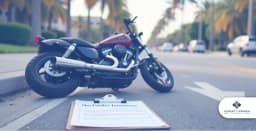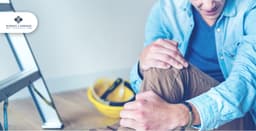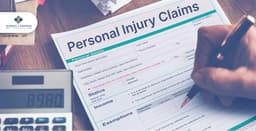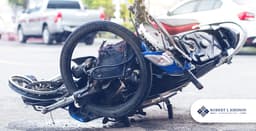
June 4, 2025
How to Maximize Your Compensation After a Bicycle Accident
In 2022, more than 45,000 bicyclists were injured in motor vehicle crashes across the United States, according to the National Highway Traffic Safety Administration. These incidents lead to physical injury, financial difficulty, and legal choices that call for careful consideration.
Bicycle collisions in Florida are more than accidents; they are battlegrounds. And if you’re going to stand up again — truly stand up — you’ll need a greater remedy than bandages. You’ll need to know how to fight for what’s rightfully yours.
Let’s talk about how to do exactly that…
(I) See a Doctor First; Your Health is the Starting Point
The moments after a bicycle accident are disorienting. Adrenaline is high, and the instinct to get home often takes over. Many riders skip medical care, assuming the pain will fade. That decision can quietly weaken everything that follows.
Injuries like concussions or internal trauma don’t always show themselves right away. A few hours later, a headache turns to nausea. Stiffness becomes sharp pain. Without prompt evaluation, there’s no record linking those symptoms to the crash.
Nearly 29% of bicycle-related injuries involve head trauma.
(Source: Centers for Disease Control and Prevention)
A medical visit creates a timestamp. It documents the injury when it’s fresh, and that detail often makes the difference in how insurance companies respond.
Hospitals, urgent care, primary doctors—any formal evaluation helps. Keep the paperwork. Save digital copies. Request your test results. Those documents help establish credibility early on, before questions start coming in from adjusters or defense attorneys.
Taking that step right away sends a clear message: the injury is real, and it won’t be dismissed.
(II) Get the Incident on Record

A bicycle accident can unfold in seconds; the impact—physical, emotional, and financial—lasts much longer. One of the most effective ways to protect your version of events is to make sure there’s an official police report.
When officers respond to the scene, they document key details: location, time, parties involved, road conditions, and early witness input. These observations become part of the permanent record and are often one of the first things insurance companies review. Without that report, your claim starts with less weight behind it.
Once the report is filed, ask for a copy. Read it carefully. Errors happen, such as wrong location, incorrect vehicle position, and missing witnesses. If something looks off, submit a written request for corrections. Early clarity helps prevent disputes later.
Only around 10% of injury-causing bicycle accidents appear in police data.
(Source: Pedestrian and Bicycle Information Center)
Making sure your incident is documented can place your case among the few with a verified foundation, ready to stand up to scrutiny.
Most Relevant Blogs:
(III) What You See Now May Matter Later: Preserve the Evidence
In the moments after a crash, what’s visible won’t stay that way for long. Bikes get repaired, skid marks fade, and witnesses move on. That’s why preserving the scene is just as important as seeking medical care.
Use your phone to document everything—start with your bicycle. Dents, bent wheels, broken chains—every detail shows the force of impact. Photograph the vehicle as well, especially license plates, damage, and its position in relation to you.
Visible injuries, no matter how minor, should be recorded. Bruises, scrapes, torn clothing—they all tell a story. Look around for road signage, traffic signals, and anything unusual about the surroundings. A missing stop sign or unclear markings can shift the focus later.
Hold onto your helmet, gloves, and anything else damaged in the crash. These items may serve as physical proof of the severity involved.
If anyone stopped to help or witnessed what happened, ask for their name and number. Even a short statement from a bystander can give your claim the backing it needs when questions arise down the line.
(IV) The Insurer’s Primary Duty Is Not to You

In the aftermath of a bicycle accident, it’s tempting to accept the first offer from an insurance company. They may promise a quick settlement, hoping to close the case fast. However, often, those offers fall short of what you’re truly entitled to.
Insurance adjusters work with one goal in mind: minimizing payouts. They may ask you to give a recorded statement or sign documents, all while downplaying the extent of your injuries or damages. These requests might seem harmless, even routine; they can jeopardize your case.
Individuals with legal representation receive settlements that are over three times larger on average.
(Source: Martindale-Nolo Research)
Before agreeing to anything, take a moment to consult with an attorney who can help you avoid making costly mistakes.
(V) Count More Than Bills: Track the Ripple Effects
After a bicycle accident, attention often turns to the medical bills first. Hospital charges, specialist consultations, imaging scans, and prescriptions are important to document, though they represent just one part of what’s lost.
A complete claim includes more than what appears on a receipt. If you’ve had to take unpaid leave or reduce your hours, that loss of income is part of the financial burden. Transportation costs for appointments, physical rehabilitation, home care supplies, and over-the-counter treatments all contribute to the disruption and deserve careful tracking.
There are also effects that unfold quietly in the background. Pain that makes daily tasks difficult, stiffness that lingers long after the bruises fade, or sleep disrupted by discomfort and stress—these experiences matter. Emotional fatigue, loss of independence, and withdrawal from usual routines can also shape your recovery.
To help capture these details, many people find value in keeping a daily recovery log. This can include notes on physical symptoms, changes in range of motion, canceled plans, or emotional challenges like irritability or sadness. Even brief reflections can create a meaningful record over time.
These entries support your claim by connecting the injury to your lived experience, helping demonstrate how much was disrupted and how long it’s taken to regain a sense of normalcy.
(VI) Some Injuries Don’t Heal Quickly: Plan for the Long Term
Healing doesn’t always follow the timeline you expect. A broken bone might mend within weeks, while nerve pain, mobility issues, or trauma linger long after the visible injuries fade. Some cyclists feel fine initially, only to develop new symptoms weeks later—stiff joints, numbness, panic attacks, and insomnia.
About 20% of injured cyclists continue to experience symptoms six months or longer after the incident
(Source: American Journal of Public Health).
They may require extended therapy, specialized treatment, or adjustments to routines. That’s why any settlement should reflect more than the current situation—it should account for what your life might look like in the months ahead.
Before closing your case, consider seeking evaluations from medical professionals who can assess long-term care needs. Planning for future complications now helps ensure you’re not left covering those costs alone later.
(VII) Insight You Can Count On: Guidance from Robert J. Johnson

When questions start piling up—medical bills, missed work, pressure from insurance companies—you deserve guidance that’s steady and informed. We’ve spent years standing beside injured cyclists and pedestrians, making sure their voices don’t get lost in the process.
We don’t treat your case like paperwork. We investigate the scene, review every detail, and take the time to understand how the injury has affected your life, not just in the moment, moving forward as well. That’s what allows us to build claims that reflect the full weight of what you’ve been through.
There’s no shortcut to healing, not in the body, not in the bank, not in the law. So we don’t rush. We build claims that reflect the full weight of what happened — not just the cost, but the consequence.
If you’ve been injured and need direction, we’re here to help. Contact us today to talk through your next steps.































































